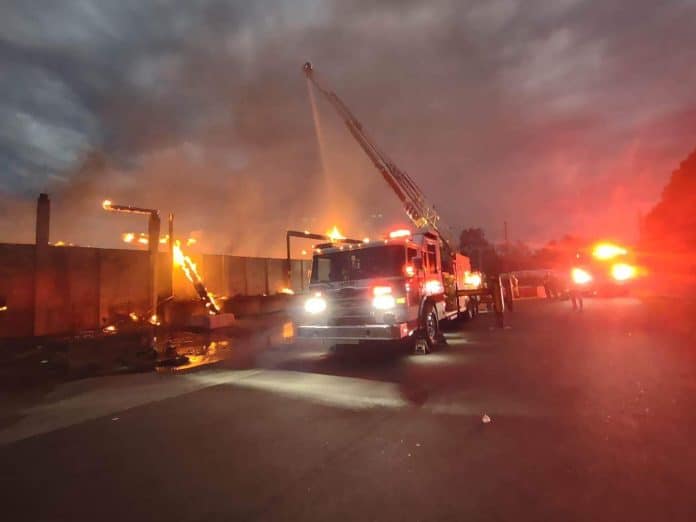As the 2024 budget season approaches, commissioners held a second workshop to discuss Fire and Emergency Services assessment rates (fire assessment). The board weighed four options for the non-ad-valorem (MSBU), favoring a potential 26.7 percent increase for single-family homeowners. Under this structure, other property types will also see significant increases, such as Industrial / Warehouse and Government (101.3 percent), Hospitals and Nursing Homes (71.8 percent). Properties that will see a drop in assessment rates are; Commercial buildings (-30.9 percent), places of worship (-0.6 percent), and vacant land (-66.3 percent).
The proposal will come before a public hearing at a later date. A budget workshop is scheduled for July 6, 2023. The current assessment for Fire and Emergency Services for a single-family home is $253.11, and the proposal will increase that to $320.72 for Fiscal Year (FY) 2024. The $67.61 increase is deemed necessary due to general inflation raising the cost of equipment and services.
The conservative board is faced with meeting the financial challenges of Hernando County Fire and Emergency Services (HCFES) while keeping its promises to citizens to protect against rising taxes. The fire assessment is considered a special assessment and is governed by State law.
Commissioners looked to neighboring counties for some guidance. Pasco, with a reported tax base of 591,048 has a non-ad-valorem assessment for their Fire and Emergency Services of $45.09. Their ad-valorem rate is 1.8036. Citrus County, with a tax base of 157,626 charges a $79.00 non-ad-valorem assessment, and an ad-valorem rate of 0.5780. Citrus allocates $2.5 million from its General Fund for EMS.
Essentially, Citrus and Pasco counties are subsidizing fire assessment revenues from other funds. Commissioner Steve Champion said, “(Citrus and Pasco) are probably doing that because they don’t want to have a $300 fee charged to everybody. They’re putting it in the millage where it can be calculated on value.”
Hernando County’s policy was changed some years ago. As explained by Chairman John Allocco, “The reason why we went this way is because we had a lot of people who weren’t paying anything (into fire ad-valorem), and we also had the homes on the lower (property value) end that were actually, statistically using a lot more of the services … so it was unfairly being subsidized by people on the high end.”
Champion suggested the county model its fire assessment after that of Citrus and Pasco Counties and lower rates charged to property owners. He went on to say, “I want everyone to pay something, so the house that has no taxes because they’re homestead (exemption), they should pay something for fire, but not $300. Maybe there’s a fair number, and we can subsidize it.”
Commissioners, while seeking to soften the blow for property owners are also concerned about economic uncertainty. Champion commented that the number of home foreclosures has increased in the county, and he fears a “perfect storm is coming.”
As Commissioners discussed the balance of maintaining the level of service provided by HCFES, County Administrator Jeff Rogers added that equipment costs have risen substantially. “A fire truck used to be $300,000 in a CIP (Capital Improvement Plan). The cheapest one is $756,000, and that’s not the one (the county needs).”
While the cost of fuel has decreased for diesel vehicles, the cost of equipment, operations, and personnel has increased.
Paul Hasenmeier, Director of Public Safety and Fire Chief spoke about new fire stations planned or under construction. Station 15 is reported as a cost of just under $8 million, as is Station 16. “The operating cost, the staff providing the service is often the expensive part. But we also have to provide for the community with what we’re faced with now … In government, sometimes we can’t do more with less, so what service do we cut? Is it ambulances?”
Hasenmeier added that he and his team have looked extensively at cost-cutting measures, stymied by the sheer fact that prices have increased. “$550,000 a couple of years ago for a fire engine, now we’re over $800,000.”
Allocco suggested looking into cost-per-resident by service over the long term. “We need to be probably looking at some of these services to gauge them as what the cost per resident is for these services over time. Because if we’re seeing that we’re gaining more residents but the cost per resident isn’t going down, what’s the reason for that.”
Allocco acknowledges that current inflation is the cause. “But at some point, there’s got to be a benefit … if a smaller county is paying less per resident than we are, and a bigger county is paying less per resident than we are, then we’ve got a problem.”

